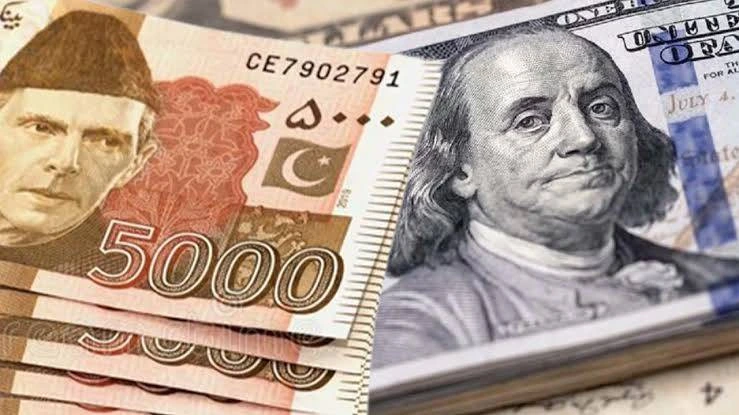Islamabad 4 August: The Pakistani rupee continued its upward trajectory for the ninth consecutive trading session on Monday, showing strength against major foreign currencies, including the US Dollar (USD) and British Pound (GBP).
In the interbank market, the rupee closed at Rs. 282 per dollar, recovering from earlier fluctuations and holding steady throughout the day. Open market rates remained in the Rs. 283–285 range, with some sellers in Islamabad quoting as high as Rs. 285/$.
The local currency also appreciated against the British Pound, which was traded between Rs. 377 and Rs. 382 in open markets. According to the Exchange Companies Association of Pakistan (ECAP), the official buying rate stood at Rs. 380, while several exchange counters across major cities offered the pound at Rs. 382.
READ MORE: Currency rates of NBP
Key Drivers Behind Rupee’s Rise
The rupee’s continued recovery is being attributed to multiple factors:
- Improved Foreign Exchange Reserves: The State Bank of Pakistan (SBP) reported an increase in reserves over the past few weeks, largely due to inflows from multilateral lenders and bilateral partners.
- Tightened Import Controls: Reduced demand for the dollar amid restricted imports and stronger oversight has helped ease pressure on the exchange rate.
- Increased Remittance Inflows: With the start of the new fiscal year and post-Hajj season, remittances from overseas Pakistanis have seen a noticeable rise, providing a boost to the foreign exchange supply.
- Market Stability and Confidence: The SBP’s strict regulatory actions against speculative trading and hawala/hundi operators have helped stabilize market expectations.
- Expectations of IMF Review: Positive anticipation around the upcoming review of Pakistan’s ongoing agreement with the International Monetary Fund (IMF) has supported currency sentiment.
Currency dealers also pointed to a decline in speculative dollar demand in the open market as one of the reasons behind the rupee’s firm position.
Experts suggest that if the current momentum continues, the rupee could remain stable in the near term, especially if macroeconomic indicators continue to improve and external debt repayments remain manageable.
However, they caution that any delay in external funding, sudden oil price shocks, or renewed political uncertainty could still pose risks to the currency’s stability.









